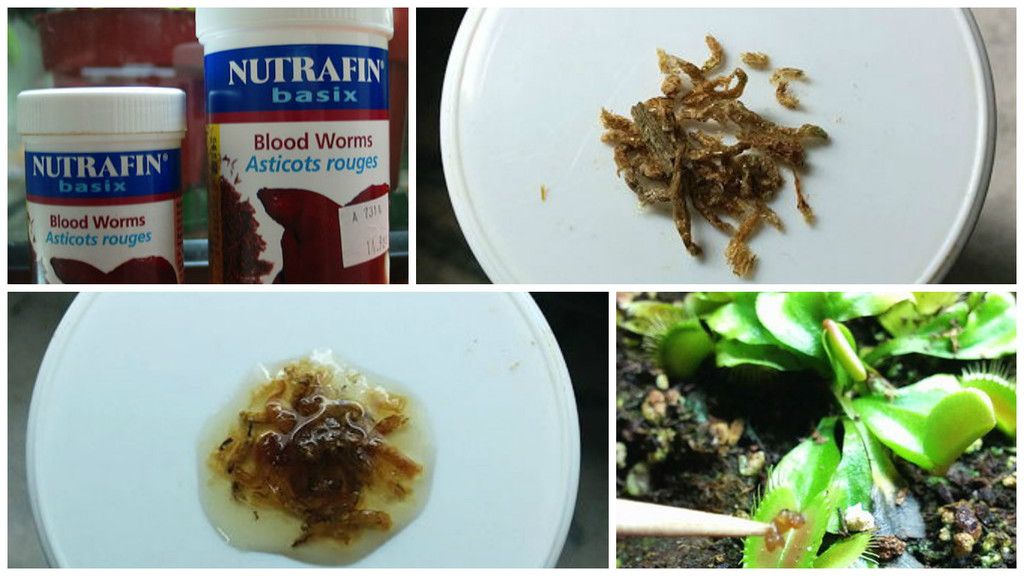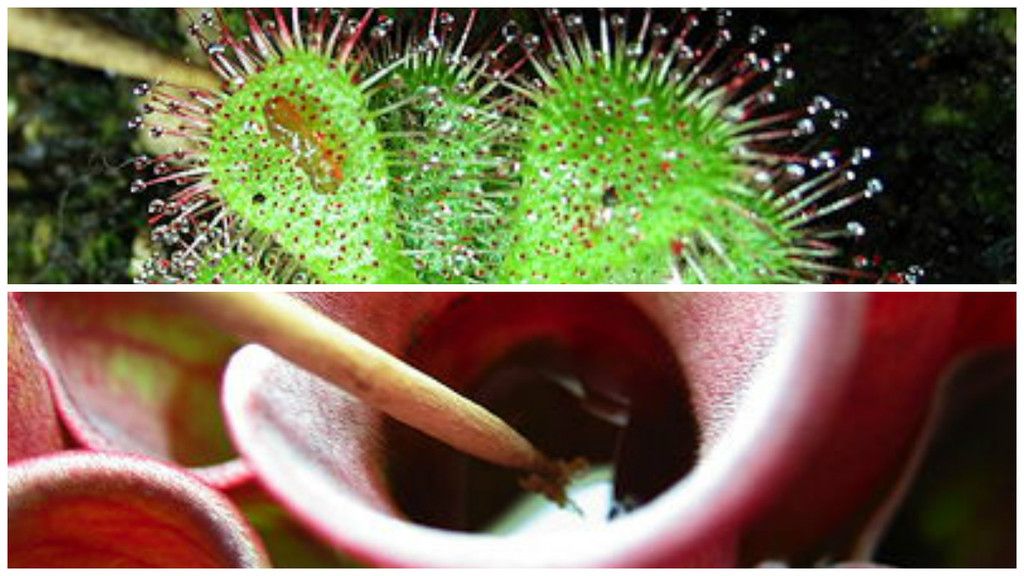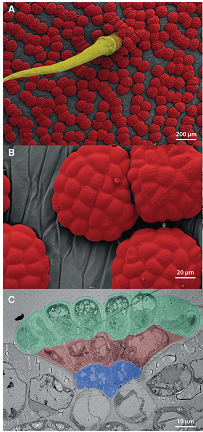

Dionaea or Venus flytraps are carnivorous plants. It is also the name of a band. This article, Venus Flytrap Carnivorous Lifestyle Builds on Herbivore Defense Strategies, says some interesting things about them. However, first here is a handy page about how to grow them. My favorite part:
“If the plant is not catching its own food, it needs to be fed in the traps with live insects, rehydrated dried blood worms, or other kinds of fish food high in insect-derived protein that can be conveniently rehydrated. If you use dead food, the traps need to be massaged to stimulate full closure and digestion.”
In fact, this page even has pictures:

Today's special: rehydrated dried blood worms

Other carnivorous species you crazy kids might be growing!
While this place sells different clones!
The interesting parts from the article are as follows:
1. Darwin used to open flytraps and tempt them with raw meat to see how the trap worked. He found out that it closed slowly and then started to secrete digestive enzymes.
2. This is where things get even more awesome. The first time an insect triggers the trap via mechano-electric stimulation of the hair on the trap, it activates the “poised to capture” mode. If the trigger is re-elicited within 20 seconds, the trap closes fast, capturing the prey. The struggling insect hits the trigger repeatedly and after five or so hits, its fate is sealed. Digestion begins!

3. The plant is mechano-smart enough to suss out the size and juiciness of the prey by the times it triggers the hair on the trap! It is smart enough to recognize chitin between its paws er jaws er leaves (part of the insect exoskeleton) and increase its enzyme secretion by a thousand-fold.


4. What links the carnivorous plants with non-carnivorous ones is that hair stimulation in the former causes the biosynthesis of a chemical that is induced by herbivory and wounding in the latter. Hence, the author’s conclusion that “Dionaea re-wires defense responses known from non-carnivorous plants in order to operate its carnivorous lifestyle.”

5. What is too bad is that all this insect-munching costs the plants metabolism-wise. The cost it extracts is in the form of growth inhibition.
6. Lastly, as soon as the digestion of insect-scrumptiousness begins, the resultant goodies are applied towards growing new capture organs and those organs, only!
I leave you now with the Great Slug that defied the odds and slithered itself to freedom!
#AllHailTheGreatSlug

 Log in with Facebook
Log in with Facebook 





